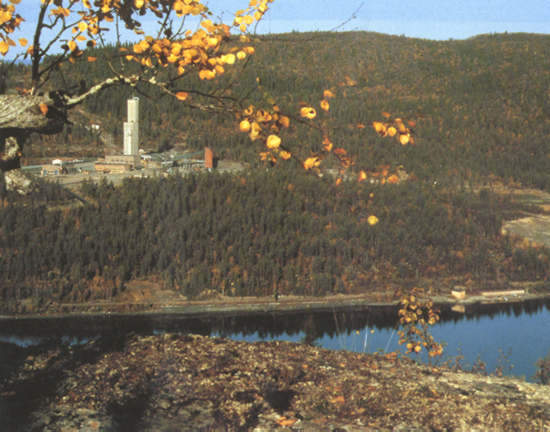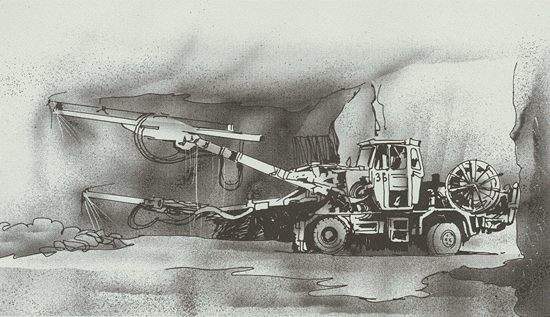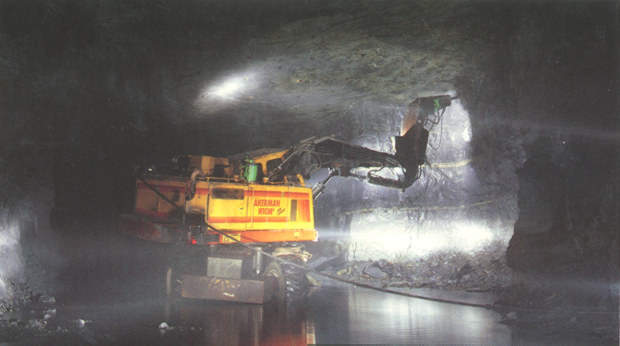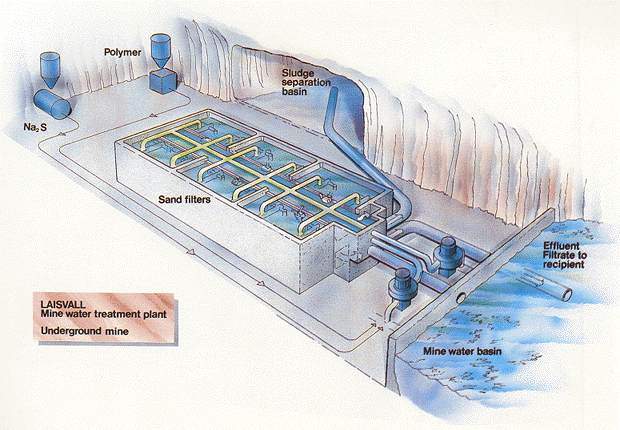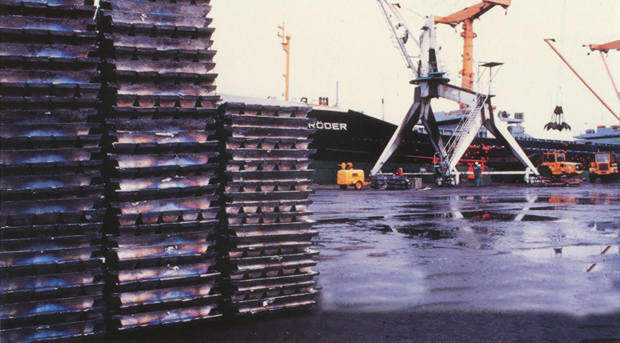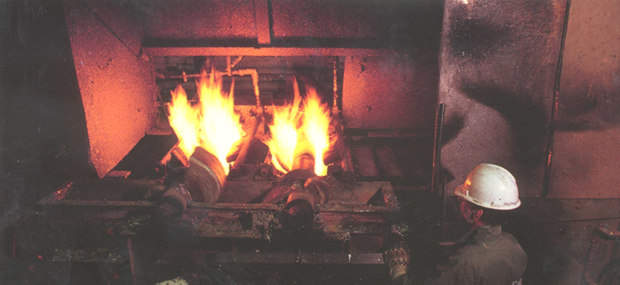Fomerly Europe’s largest lead mine, Laisvall was located in Arjeplog Municipality, northern Sweden, towards the Norwegian border. Lead-rich boulders were discovered in 1938 and, by 1941, further investigations had encouraged the authorities to decide to mine the deposit as a strategic, short-term measure. Mining commenced on an ‘improvised’ basis in 1943 but the facilities were upgraded to permanent quality later on and the whole operation expanded in stages.
Governmental imperatives having changed over the years, Boliden was not allowed to extend the mining area by diverting river flows and in 1997 gained government approval for a long-term decommissioning plan. In 1998, $1.8 million were invested, primarily to enhancing environmental impacts. The company announced closure of the mine during October 2001, following exhaustion of its reserves, having produced over 60Mt of ore during its life.
GEOLOGY AND RESERVES
The deposit occured in mainly sedimentary rocks of Cambrian to Devonian age, overlying a Precambrian basement. Mineralisation was hosted in Eocambrian sandstones, with lead distribution seemingly affected by the presence of ridges of Precambrian basement rock and by local overthrusting in the sediments. The lead-zinc-silver sulphide mineralisation was contained in thin horizontal sheets some 60m to 90m below surface. Galena, sphalerite and pyrite were the principal sulphides, with native silver sometimes visible in association with galena. Lead grade varied from nil to as much as 40% in places. Sphalerite was locally more abundant than galena.
As of January 1999, total proven and probable reserves were 6.8Mt grading 0.8% zinc, 4.6% lead and 11g/t silver. Measured and indicated reserves at that time were 3.35Mt grading 1.2% zinc, 2.0% lead and 9g/t silver. However, a SEK13.5 million exploration programme undertaken since 1997 did not reveal any further ore reserves.
MINING
The mining technique used at Laisvall was room-and-pillar, with room heights ranging from 3m to 18m. The rooms were excavated by drill-and-blast, using large Atlas Copco two-boom jumbos. Nitro Nobel Romec charging vehicles were used for explosive placement and scaling was also mechanised.
LHDs and modified wheel-loaders fed trucks for haulage to the on-site concentrator at surface, the whole of this operation having been contracted out since 1996. The roadway system was more than 250km in length, with 50km of the most heavily used roads being paved with asphalt.
Late in 1997, the mine started to develop and mine a recently discovered zinc-rich ore zone called Nadok, near the existing working area.
Part of the mine lay under Lake Stor-Laisan, and water seepage at 480 litres/s was handled by four large pumping stations. One third of the water was pumped directly back to the lake, another third was treated and returned to the lake and one third was used as process water.
ORE PROCESSING
The grinding and flotation recovery system was enhanced by the introduction of Svedala Cisa Microcel column flotation equipment and optimisation technology. The relatively simple sulphide ores allowed Boliden to optimise the concentrator for lead recovery, at the same time achieving excellent silver and good zinc recoveries.
Concentrates were trucked to Skelleftehamn. All the zinc and about half the lead product was exported, the balance of the lead concentrate undergoing treatment in the recently expanded Rönnskär smelter’s Kaldo furnace, which utilises scrap as well (see also Boliden Area Operations).
PRODUCTION
In 1997, the mining rate at Laisvall was raised to 1.9Mt/y and, in 1999, the concentrator milled 1.95Mt yielding 94,000t of lead and 24,000t of zinc concentrate. These concentrates also contained 16000kg of silver.
Contained metal outputs reported for 2000, the last full year of operation, were 63,605t of lead, 13,010t of zinc and 462,000oz of silver.

